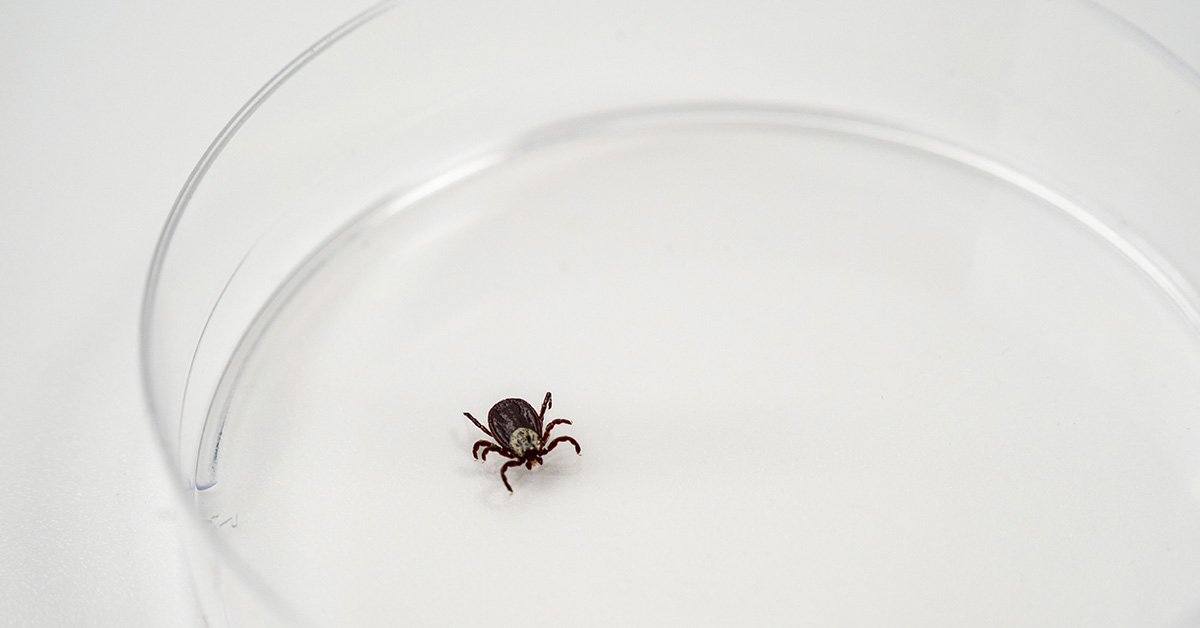
1.Appearance
Size: Ticks are small, typically between 1mm to 3mm before feeding, and can swell to about 10mm when engorged with blood.
Shape: They have a flat, oval body before feeding, which becomes more rounded after feeding.
Color: Colors vary depending on the species and whether the tick has fed. They can be brown, black, reddish-brown, or grayish-white.
2. Common Species
Deer Tick : Small, reddish-brown with black legs.
American Dog Tick: Larger, brown with white or gray markings.
Lone Star Tick: Brown with a distinctive white dot on the female’s back.
3.Habitat Ticks prefer humid environments and are often found in grassy, wooded, or shaded areas.
– Indoors, they can be found in pet bedding, furniture, and cracks and crevices around your home.
Inspecting Your Home
Check Pets: Regularly inspect your pets, as they can bring ticks into your home. Pay attention to areas around their ears, neck, and between toes.
Inspect Yourself and Family Members: Check your body, especially after spending time outdoors. Focus on areas like the scalp, armpits, groin, and behind the knees.
Examine Bedding and Furniture: Look for ticks in pet bedding, furniture, and carpets. Use a flashlight to check dark corners and crevices.
1. Tools Needed
Fine-tipped tweezers
Rubbing alcohol
Sealable plastic bag or container
Gloves (optional)
Disinfectant
2. Steps to Remove a Tick
Use fine-tipped tweezers to grasp the tick as close to the skin’s surface as possible.
Pull upward with steady, even pressure. Avoid twisting or jerking the tick, as this can cause mouth-parts to break off and remain in the skin.
After removing the tick, clean the bite area and your hands with rubbing alcohol, an iodine scrub, or soap and water.
Dispose of the tick by placing it in a sealable plastic bag or container and submerging it in alcohol, or by wrapping it tightly in tape before discarding it in the trash. Do not crush the tick with your fingers.
3.Monitoring the Bite
– Keep an eye on the bite area for any signs of rash or infection.
– If you develop a fever, rash, or flu-like symptoms, contact your healthcare provider immediately.
Preventing Ticks in Your Home
1. Regularly Check Pets: Use veterinarian-recommended tick prevention products on your pets and check them for ticks regularly.
2. Maintain Your Yard: Keep your grass short, remove leaf litter, and create a barrier of wood chips or gravel between lawns and wooded areas.
3. Clean Your Home: Vacuum frequently, especially in areas where pets rest. Wash pet bedding in hot water regularly.
4. Seal Entry Points: Repair any gaps or cracks in your home’s foundation, windows, and doors to prevent ticks from entering.
Removing ticks promptly can protect you and your loved ones from the diseases they carry. Regular inspections, both indoors and outdoors, along with proper removal techniques and preventive measures, will help keep your home tick-free. Stay vigilant and proactive to ensure a safe and healthy environment for everyone in your household.











